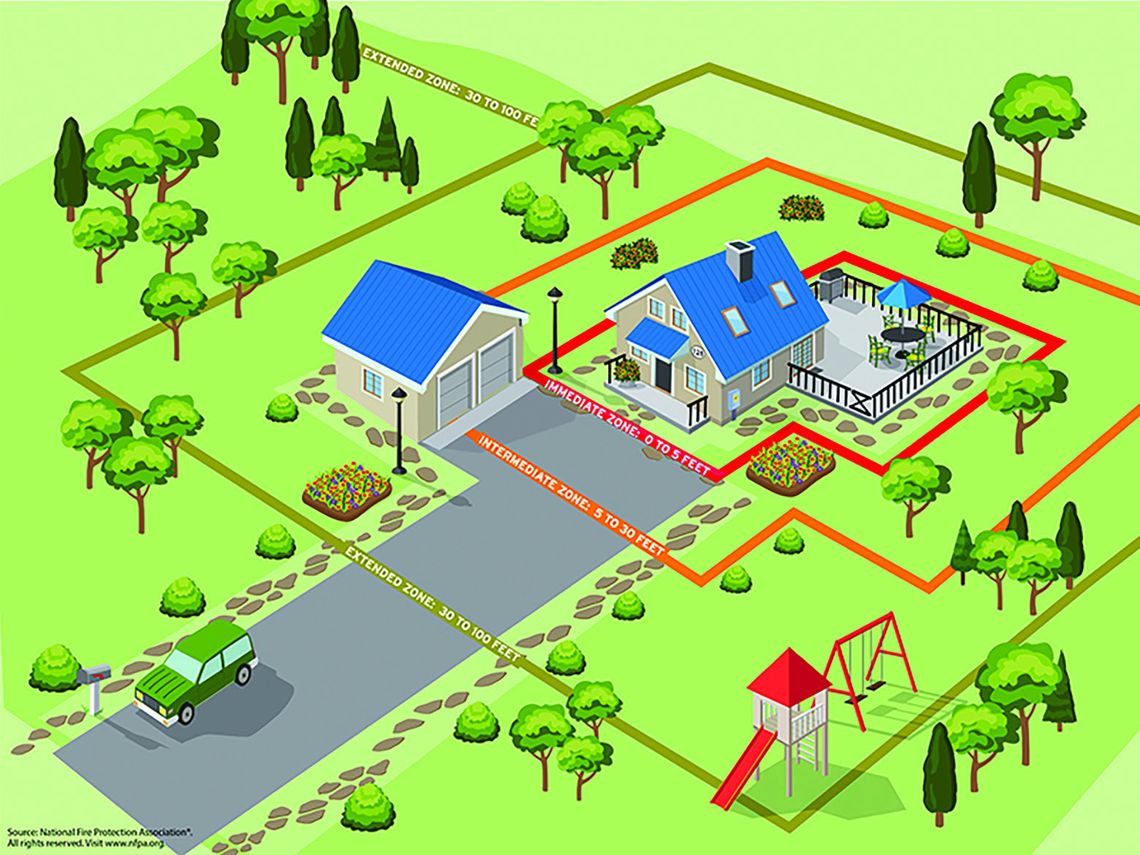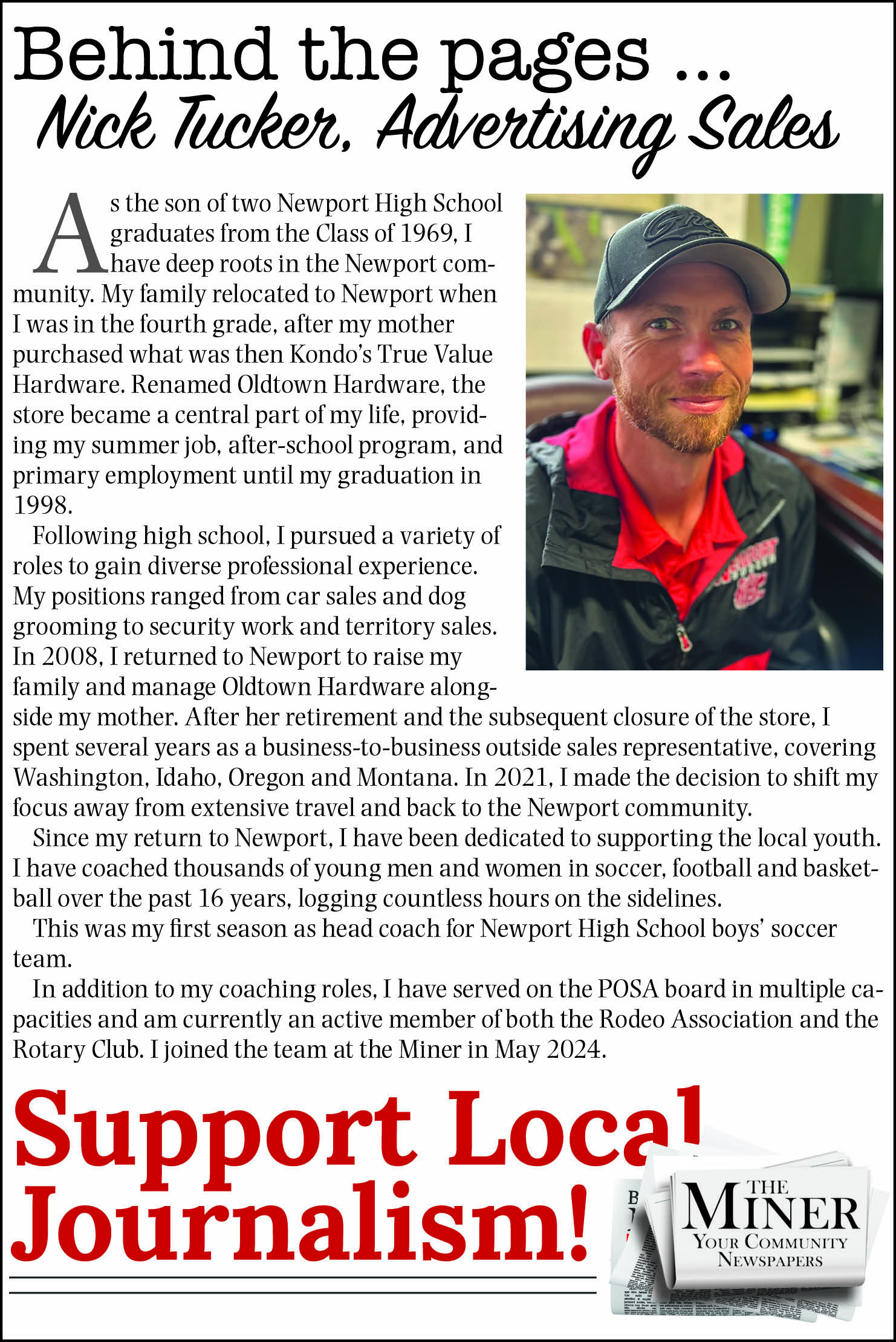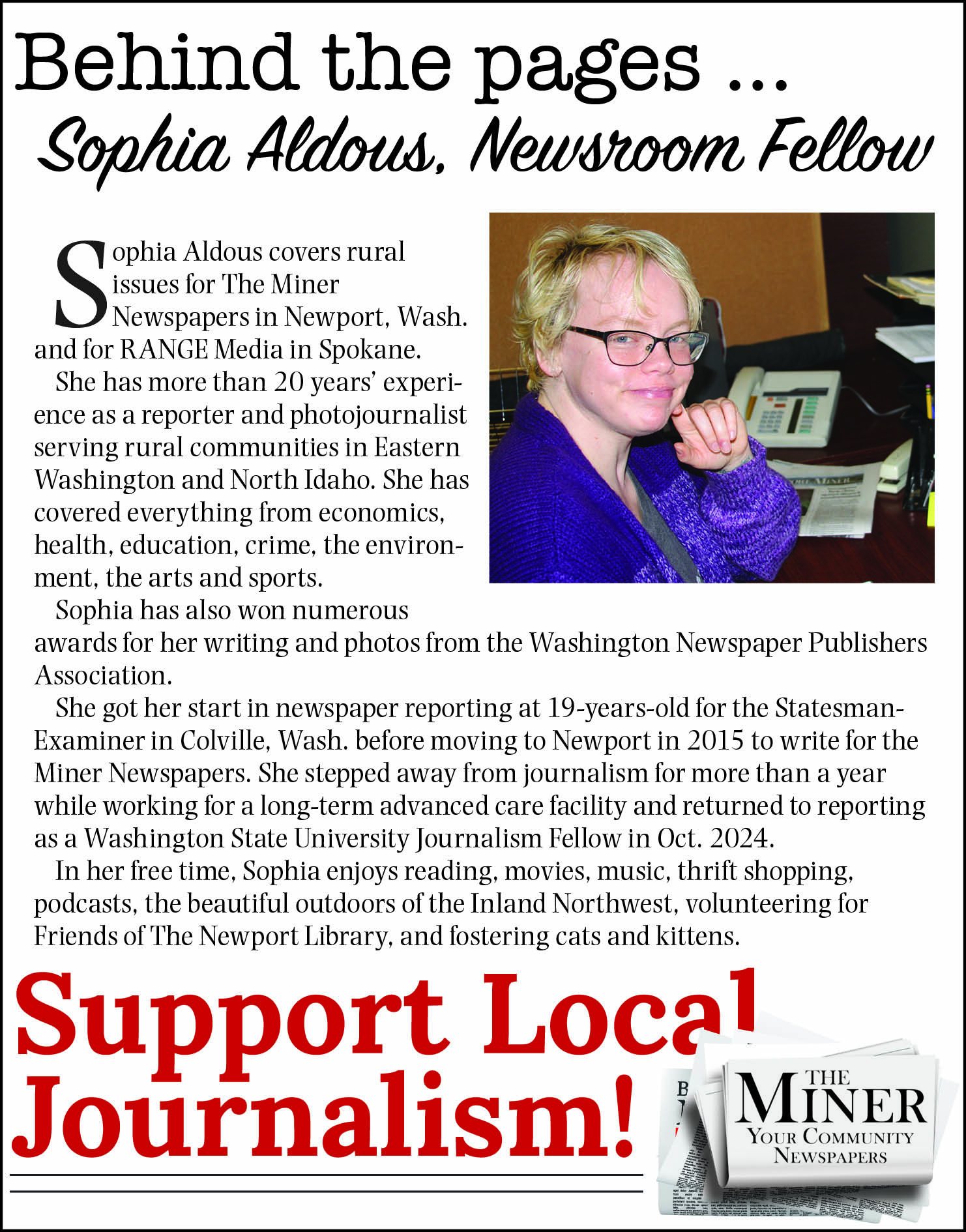NEWPORT - Wildfire risk reduction is as important to the homeowner as earthquake insurance is to Californians.
Division Chief Brad Martin of Pend Oreille County Fire District 2 said this year will a month ahead in wildfire threats.
“Due to the lack of moisture and continuous wind unless we get significant rain I predict a busy fire season,” Martin said.
Martin predicts by the 4th of July, the fire season will be active.
Every year, fireworks on the Fourth have resulted in wildfires, according to the National Interagency Fire Center, affecting 363,551 acres of land.
These wildfires can damage property if no preventative measures are enacted.
To decrease the chances of a house catching on fire during a wildfire, the National Fire Protection Association has these tips for homeowners.
Choose fire-resistant building materials and limit the amount of flammable vegetation in the three home ignition zones. The zones include the Immediate Zone: (0 to 5 feet around the house), the Intermediate Zone (5 to 30 feet), and the Extended Zone (30 to 100 feet).
To reduce ember ignitions and fire spread, trim branches that overhang the home, porch, and deck and prune branches of large trees up to 6 to 10 feet (depending on their height) from the ground. Remove plants containing resins, oils, and waxes. Use crushed stone or gravel instead of flammable mulches in the Immediate Zone (0 to 5 feet around the house). Keep your landscape in good condition.
Martin said the best practices for preparing for wildfire season are to keep your grass green and mowed that are in a 30-foot perimeter of the home.
“And prune your tree limbs at least six feet up from the ground to reduce ladder fuels,” he said.
Fire prevention includes storing flammable materials underneath decks or porches. Removing dead vegetation and debris from under decks and porches and between deck board joints also helps.
Class A fire-rated roofing products, such as composite shingles, metal, concrete, and clay tiles, offer the best protection stated . Inspect shingles or roof tiles and replace or repair those that are loose or missing to prevent ember penetration. Box in eaves, but provide ventilation to prevent condensation and mildew. Roof and attic vents should be screened to prevent ember entry.
“When wildfire strikes, make sure your windows and doors are closed and all burnable furnishings and firewood are away from the perimeter of your home,” Martin said.
He suggested rolling up windows on vehicles and closing doors on secondary structures.
“Remember, many structures are lost in communities due to fire ember showers so reduce the openings and fuel beds around the home. This will also reduce the chance of burning neighboring structures in your community,” Martin said.
Martin advises calling 911 early if you see a fire so that your local fire department can act upon it quickly even if you think it is knocked down.
To help emergency responders, ensure the home and neighborhood have legible and clearly marked street names and numbers. Driveways should be at least 12 feet wide with a vertical clearance of 15 feet for emergency vehicle access.
Develop, discuss and practice an emergency action plan with everyone in the home including details for handling pets, large animals, and livestock.
Know two ways out of the neighborhood and have a predesignated meeting place.
Always evacuate it’s unsafe to stay—don’t wait to receive an emergency notification if threatened from the fire.
Conduct an annual insurance policy checkup to adjust for local building costs, codes, and new renovations. Create or update a home inventory to help settle claims faster.
There will be a hot dry and windy week ahead, Meteorologist Matthew Dehr of Washington State Department of Natural Resource said on Monday.
“Over the past two months, drought has been expanding from Idaho’s Panhandle,” he said.
Dehr said the state is concerned about wildfire smoke, a common occurrence in eastern Washington, that in high quantities poses a health risk for children and people with respiratory illnesses like asthma.
“As we get deeper into the summer, there is more possibilities for wildfires’” Dehr said.
He said lightning starts some wildfires, but the most common cause is human activity like illegal burning and cigarettes, a cause that people have some control over.
“People should be careful with the use of fire,” he said.
To prevent fires from spreading, Dehr has some useful tips.
“If you see smoke or fire, call 911 that will tie into local fire departments. Monitor the local emergency management authority as much as Oklahomans monitor for tornados” he said.
Dehr said over the past 10 to 15 years, wildfires have become more extreme with extreme temperatures.
“In the past, wildfire season started in late June and early July. Now, we can see wildfires as early as early June,” he said.
For more information about protecting your property from wildfires, a resource is the Washington State Department of Natural Resources website Wildfire Ready Neighbors at www.wildfireready.dnr.wa.gov.
.png)














